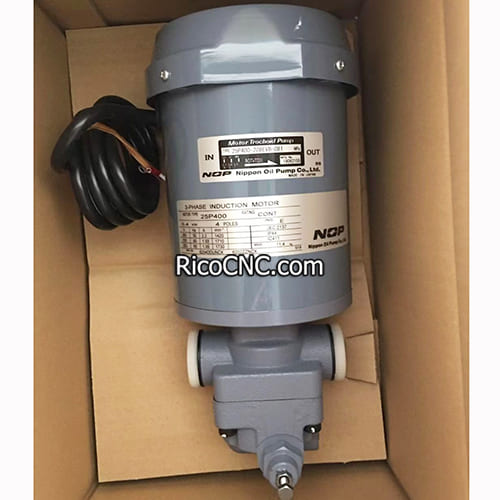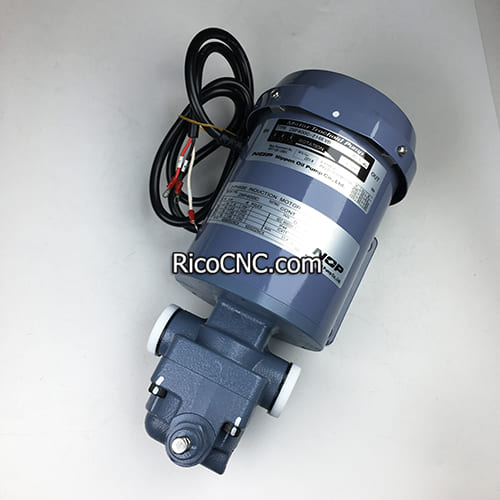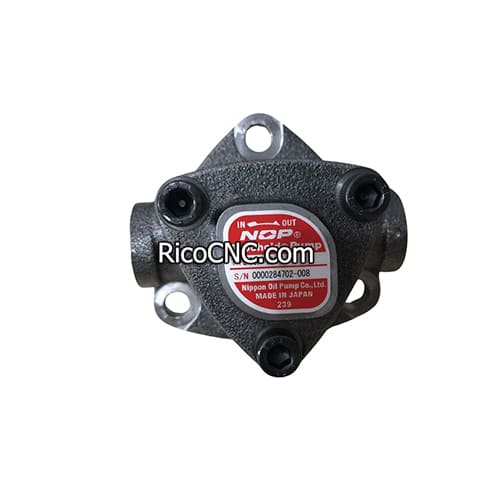

What is a Trochoid Oil Pump?
Introduction
A trochoid oil pump is a type of positive displacement pump commonly used in automotive and industrial applications to circulate oil effectively. It features a unique design that allows for smooth and efficient movement of fluids without the pulsation typical in other types of pumps. The trochoid oil pump is named after its internal gear shape, which resembles a trochoid curve. This design minimizes vibration and ensures consistent oil flow, making it an ideal choice for precision systems that require reliable lubrication.
The trochoid oil pump is essential for maintaining the lubrication of complex machinery, ensuring efficiency, and prolonging the life of various engine components. Understanding how it works, its advantages, and its structure can help you make informed decisions when selecting a pump for your system.

1. Basic Design of a Trochoid Oil Pump
The basic structure of a trochoid oil pump includes two key components: the inner rotor and the outer rotor. The inner rotor has fewer teeth than the outer rotor, which helps in creating chambers that change in volume during rotation. This volumetric change is what generates the suction and discharge of oil through the pump.
Inner Rotor: Rotates eccentrically and has a specific number of teeth to match the outer rotor.
Outer Rotor: Rotates concentrically and usually has more teeth than the inner rotor. The interaction of the two rotors creates chambers that help in moving the fluid.
The non-contact regions between the rotors prevent metal-to-metal contact, reducing wear and promoting longer operational life. The precise engineering of these regions contributes to the pump's efficiency by minimizing friction.
For a detailed look at similar pump components, you can visit NOP Oil Pump Trochoid Pump Nippon Gear.
2. How a Trochoid Oil Pump Works
The working principle of a trochoid oil pump relies on the interaction between the inner and outer rotors. As the inner rotor rotates within the outer rotor, the varying volumes of the inter-tooth spaces create a continuous cycle of suction and discharge, allowing the oil to be pumped smoothly.
Suction Phase: As the rotor rotates, the inter-tooth spaces expand, creating a vacuum that pulls the oil from the intake port.
Discharge Phase: As the rotation continues, the inter-tooth spaces decrease in volume, pushing the oil out through the discharge port.
This unique design ensures that the pump maintains a maximum sealed space, preventing leakages and providing a consistent flow rate. The efficiency of the trochoid oil pump is largely due to the smooth, non-contact movement of the rotors, which results in minimal wear.
Key Characteristics:
Reduction in Pulsation: The design helps in reducing the pulsation that can be seen in other types of positive displacement pumps, which ensures smoother operation.
High Efficiency: Minimal internal clearance and optimized rotor design allow for maximum sealed space.
3. Components and Materials
A trochoid oil pump is made up of several components, each playing a crucial role in ensuring efficient operation.
Rotors: Made from high-strength alloy or steel to withstand high pressures and resist wear.
Pump Housing: Generally made from aluminum or cast iron, the housing ensures that the pump maintains its structural integrity under high pressures.
Seals and Gaskets: These are crucial for maintaining the sealed spaces within the pump, ensuring there is no leakage between the intake and discharge ports.
The use of non-contact regions within the rotors and the pump casing minimizes friction, contributing to the long-term durability of the pump. The materials used in manufacturing these components are often selected to ensure maximum resilience to high temperatures and pressures.
For more advanced options in pump systems, consider the Bosch Rexroth Gear Pump Hydraulic.
4. Applications of Trochoid Oil Pumps
Trochoid oil pumps are widely used across different industries due to their efficiency, reliability, and ability to handle various types of fluids. Some common applications include:
Automotive Industry: Used in engine lubrication systems to ensure that critical engine components, such as bearings and camshafts, are lubricated continuously.
Hydraulic Systems: Helps circulate hydraulic oil to different parts of a system, ensuring consistent and smooth operation.
HVAC and Refrigeration: Trochoid pumps are often used in these systems to circulate refrigerants and other fluids efficiently.
The precision of trochoid pumps makes them highly suited for applications where maintaining a consistent flow rate without fluctuations is essential.
Example: The Trochoid Pump NOP TOP-10A is specifically designed for automotive and hydraulic applications, providing a robust solution for high-performance needs.
5. Advantages of Trochoid Oil Pumps
Trochoid oil pumps offer numerous advantages over other types of pumps, making them an excellent choice for various industries.
Low Noise Levels: The design of the inner and outer rotors reduces the pulsation and, subsequently, the noise levels during operation.
High Efficiency and Reliability: The non-contact regions and optimized design lead to minimal internal leakage and high efficiency, providing reliable long-term performance.
Compact Design: Trochoid pumps are relatively compact, which makes them easy to integrate into existing systems without requiring a lot of space.
Key Benefits:
Reduced wear due to non-contact design
Consistent output flow rate
High operational life due to superior material quality
6. Trochoid Oil Pump vs. Gear Pump
While both trochoid oil pumps and gear pumps are positive displacement pumps, there are several differences that set them apart in terms of performance and application.
| Parameter | Trochoid Oil Pump | Gear Pump |
|---|---|---|
| Efficiency | Higher due to non-contact rotor regions | Moderate, can suffer from leakage |
| Noise Level | Lower due to smooth rotor operation | Higher due to meshing of gears |
| Maintenance | Requires minimal maintenance | Requires more frequent checks |
| Applications | Automotive lubrication, hydraulics | General fluid transfer, lubrication |
The unique advantage of the trochoid oil pump lies in its reduction in noise and wear, which makes it more suitable for precision applications where maintaining a quiet operation is crucial.
For more information on similar fluid control systems, take a look at the Nippon Oil Pump Trochoid.
7. Key Design Considerations
When selecting a trochoid oil pump for an application, several design factors must be taken into account to ensure optimum performance:
Number of Teeth: The relationship between the number of teeth on the inner and outer rotors affects the flow rate and efficiency. Pumps with a higher number of teeth tend to offer smoother operation.
Material Selection: The materials used for the rotor, housing, and seals determine the pump’s ability to handle high temperatures and pressures.
Rotor Design: The trochoidal shape must be engineered precisely to minimize pulsation and maximize efficiency. Any deviation in the geometry can lead to increased wear or poor flow characteristics.
The Trochoid Pump by Nippon Gear offers an excellent example of a well-engineered design that is effective for automotive applications.
8. Maintenance of Trochoid Oil Pumps
Regular maintenance of a trochoid oil pump can significantly extend its operational life and ensure continued high performance. Here are some essential maintenance tips:
Inspect Oil Quality: Contaminants in the oil can cause wear on the internal components. Regularly inspect and replace the oil to keep the pump in good condition.
Check for Leakage: Ensure that all gaskets and seals are intact to prevent leakage from the intake or discharge ports.
Rotor Inspection: Periodically check the rotor surfaces for any signs of wear or damage. Damaged rotors can lead to inefficiencies and increased pulsation.
Proper maintenance will ensure that the pump continues to provide reliable performance with minimal noise and pulsation.
FAQs
1. How does a trochoid oil pump minimize noise?
The unique trochoidal rotor design reduces pulsation, which in turn minimizes the noise generated during operation.
2. What are the primary applications of trochoid oil pumps?
Trochoid oil pumps are primarily used in automotive engines for lubrication, as well as in hydraulic systems and HVAC applications to circulate fluids efficiently.
3. How often should I maintain a trochoid oil pump?
Regular maintenance is recommended every six months, especially checking oil quality and inspecting rotors for wear.
4. Can a trochoid pump be used for high-pressure applications?
Yes, with the correct materials and construction, trochoid pumps can handle moderate to high pressures efficiently.
Conclusion
A trochoid oil pump offers an effective solution for maintaining consistent lubrication in mechanical systems, particularly in automotive and industrial environments. Its unique design, characterized by trochoidal rotor geometry, ensures smooth fluid flow with reduced pulsation and noise. Understanding its working principles, applications, and maintenance requirements can help you make the most of this reliable piece of engineering.
If you are looking for a reliable and efficient pump for your system, consider the range of trochoid oil pumps available at Qinggong Group. Their robust design and advanced features make them ideal for a wide range of industrial applications.















